
A splatter film is a subgenre of horror films that deliberately focuses on graphic portrayals of gore and graphic violence. These films, usually through the use of special effects, display a fascination with the vulnerability of the human body and the theatricality of its mutilation. The term "splatter cinema" was coined by George A. Romero to describe his film Dawn of the Dead, though Dawn of the Dead is generally considered by critics to have higher aspirations, such as social commentary, than to be simply exploitative for its own sake.

Blood Feast is a 1963 American splatter film. It was composed, shot, and directed by Herschell Gordon Lewis, written by Allison Louise Downe from an idea by Lewis and David F. Freidman, and stars Mal Arnold, William Kerwin, Connie Mason, and Lyn Bolton. The plot focuses on a psychopathic food caterer named Fuad Ramses (Arnold) who kills women so that he can include their body parts in his meals and perform sacrifices to his "Egyptian goddess" Ishtar.
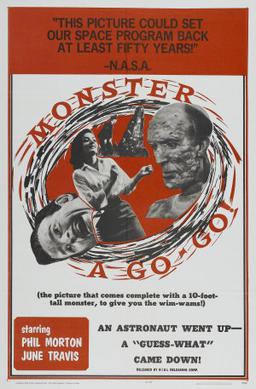
Monster a Go-Go! is a 1965 American science-fiction horror film directed by Bill Rebane and Herschell Gordon Lewis. The film is considered to be one of the worst films ever made.

Herschell Gordon Lewis was an American filmmaker, best known for creating the "splatter" subgenre of horror films. He is often called the "Godfather of Gore", though his film career included works in a range of exploitation film genres including juvenile delinquent films, nudie-cuties, two children's films and at least one rural comedy. On Lewis' career, AllMovie wrote, "With his better-known gore films, Herschell Gordon Lewis was a pioneer, going further than anyone else dared, probing the depths of disgust and discomfort onscreen with more bad taste and imagination than anyone of his era."

Two Thousand Maniacs! is a 1964 American horror film written and directed by Herschell Gordon Lewis and starring 1963 Playboy Playmate Connie Mason. It follows a group of Northern tourists who are savagely tortured and murdered during a Confederate celebration of a small Southern community's centennial.
Connie Mason is an American model and actress who was Playboy magazine's Playmate of the Month for its June 1963 issue. Mason then acted in the gore movies pioneered by Herschell Gordon Lewis, Blood Feast and Two Thousand Maniacs! Her centerfold was photographed by Pompeo Posar. She was also a Playboy Bunny at the Chicago club.

Goldilocks and The Three Bares is a 1963 nudie-cutie film from the legendary exploitation team of Herschell Gordon Lewis and David F. Friedman. The plot of the film has nothing to do with the famous fable which inspired the title. It was billed as the "first nudist musical".
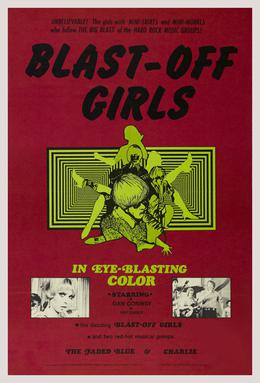
Blast-Off Girls is a 1967 American exploitation film directed by Herschell Gordon Lewis and starring Dan Conway, Ray Sager, Tom Tyrell, Ron Liace, and Dennis Hickey.

The Wizard of Gore is a 1970 American splatter film directed by Herschell Gordon Lewis and starring Ray Sager, Judy Cler, and Wayne Ratay. The screenplay was written by Allen Kahn.
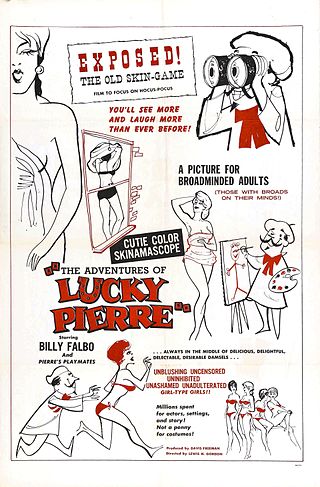
The Adventures of Lucky Pierre is a 1961 nudie cutie film created by exploitation filmmakers Herschell Gordon Lewis and David F. Friedman. The first of its kind to be filmed in color, the film starred comedian Billy Falbo. It was unique for its time and genre, adding successful comedy to the nudity and sensationalist material.
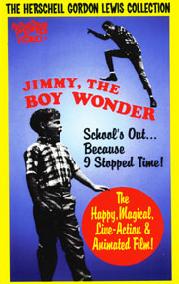
Jimmy, the Boy Wonder is a 1966 children's musical film about a boy, played by Dennis Jones, who successfully stops time. The film is one of two children's features directed by Herschell Gordon Lewis, the other being The Magic Land of Mother Goose, who is better known for his gory splatter films. It was described as a "glorious bomb" by the Scarecrow Video Movie Guide.

The Gore Gore Girls is a 1972 comedy horror splatter film directed by Herschell Gordon Lewis.
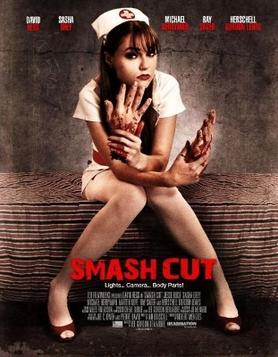
Smash Cut is a 2009 Canadian slasher film directed and edited by Lee Demarbre, and produced by Robert Menzies. Starring David Hess, Sasha Grey, Michael Berryman, Ray Sager and Herschell Gordon Lewis, the plot follows a struggling filmmaker who finds that practical effects are much easier to come by.

FantaCo Enterprises is an American comic book store and publishing company founded and created by Thomas Skulan and based in Albany, New York. As a publisher, FantaCo was known for its idiosyncratic line-up of mostly black-and-white titles, including the humorous Hembeck Series and the horror title Gore Shriek. FantaCo also published "The Chronicles Series", which cataloged top-selling Marvel Comics titles. In its later years, FantaCo published mostly horror comics and a small number of "good girl art".

Blood Freak is a 1972 American horror film directed by Brad F. Grinter and starring Steve Hawkes, Dana Cullivan, Heather Hughes, and Bob Currier.

Scum of the Earth! is a 1963 American exploitation film written and directed by Herschell Gordon Lewis and produced by David F. Friedman. It is credited as being the first film in the "roughie" genre.
Brooke McCarter was an American actor, producer, director, composer and musician. He is known for the role of Paul in the 1987 vampire horror comedy The Lost Boys.
William Kerwin was an American actor and filmmaker. He was most well known for his character roles in the films of Herschell Gordon Lewis.
Daughter of the Sun is a 1962 sexploitation comedy film directed by Herschell Gordon Lewis and produced by David F. Friedman. The film follows a young teacher who may lose her job after she is discovered to be a nudist. Lewis and Friedman produced the film after the success of the 1961 nudie cutie The Adventures of Lucky Pierre.

Living Venus is a 1961 exploitation film loosely based on the life of Playboy magazine founder Hugh Hefner. Marking the directorial debut of Herschell Gordon Lewis, the film stars frequent Lewis collaborators William Kerwin as unscrupulous magazine editor John V. Norwall and Harvey Korman as photographer Ken Carter.














